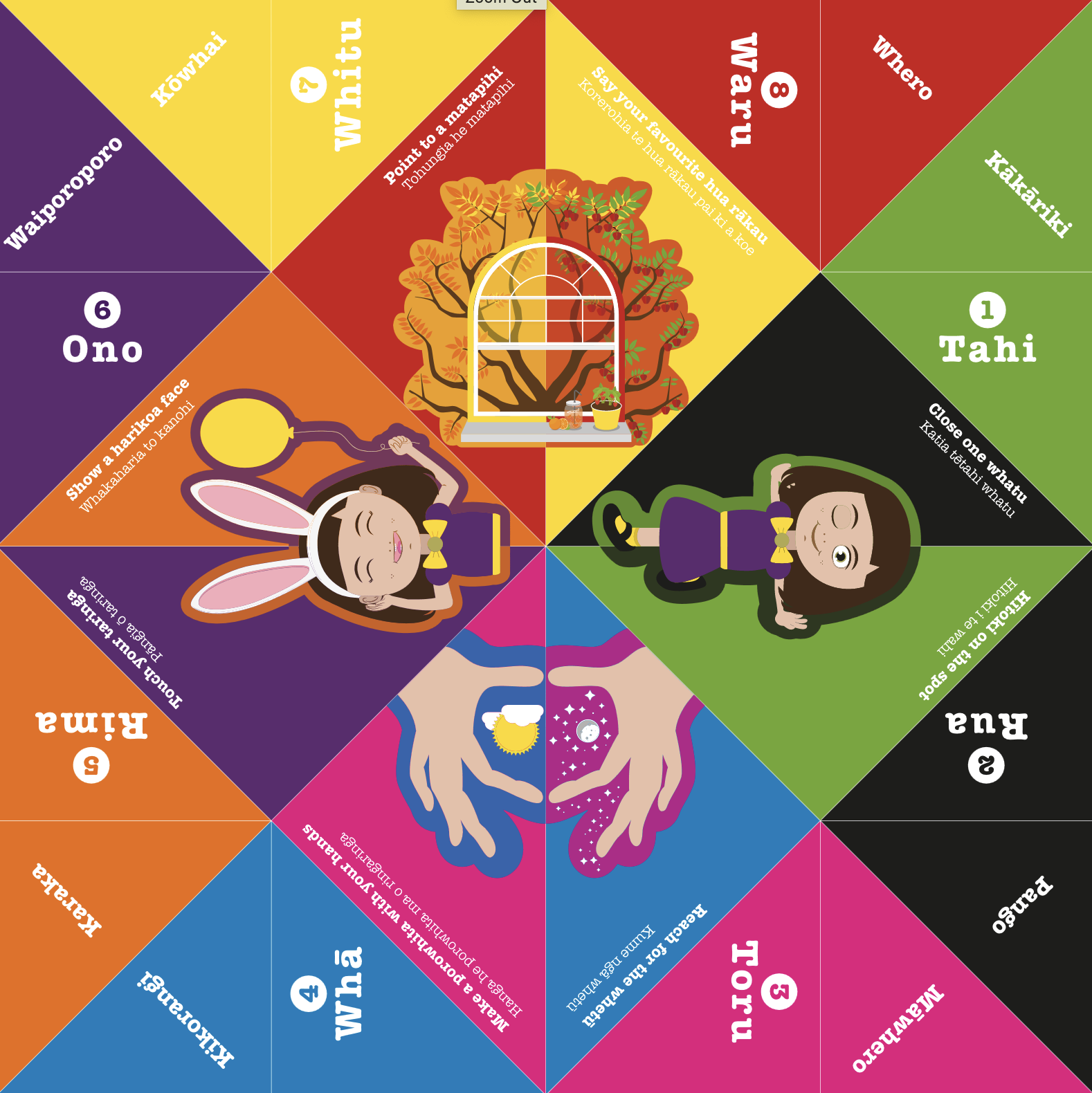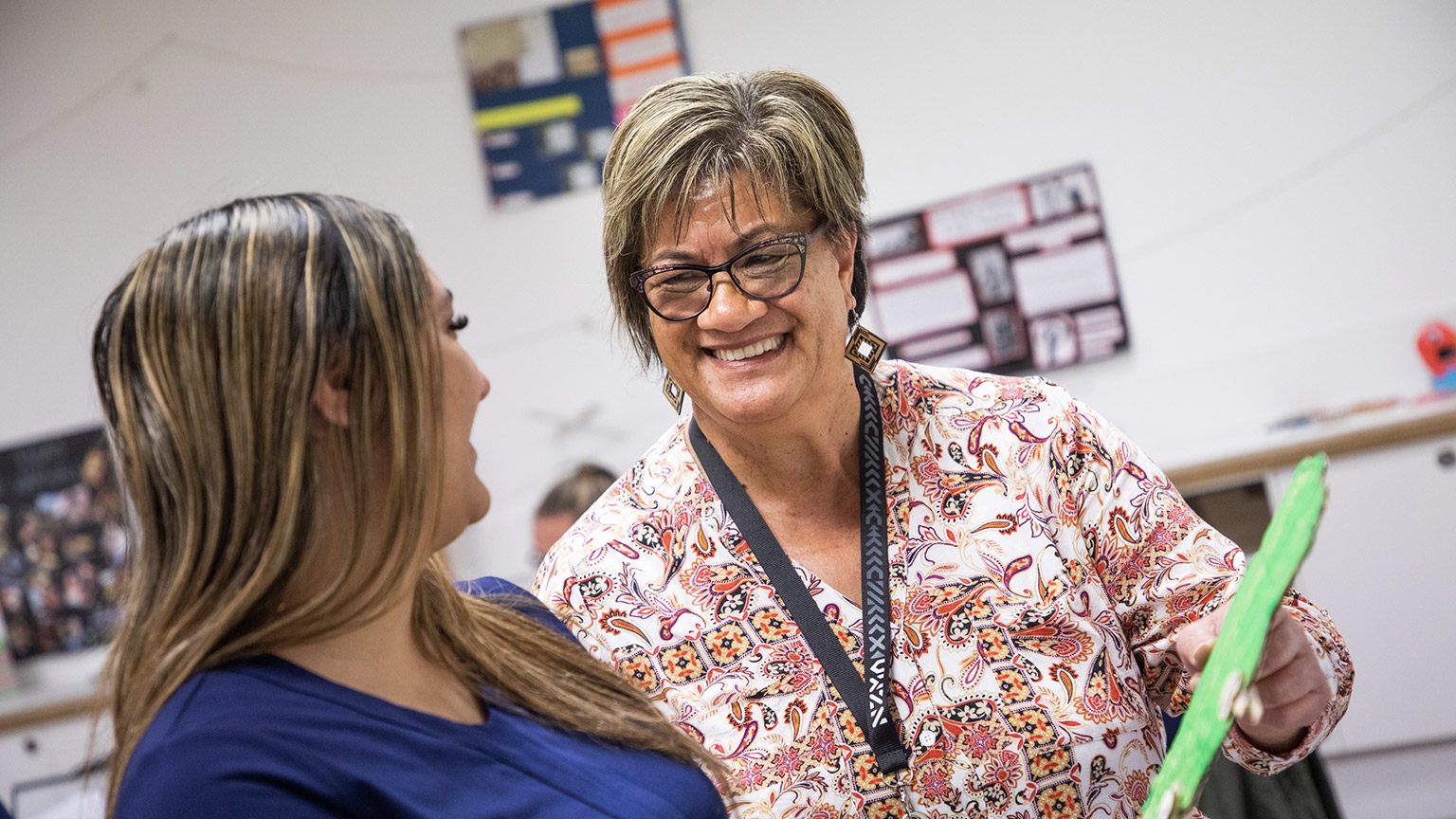As we saw in Course 1, there is a fundamental philosophical link between te Whāriki and te Tiriti o Waitangi Treaty of Waitangi. In particular, te Whāriki states:
All children are given the opportunity to develop knowledge and understanding of the cultural heritages of the partners to Te Tiriti o Waitangi Treaty of WaitangiTe Whāriki
The integration of kaupapa Māori concepts (Māori values and philosophy) and te reo Māori (Māori language) supports cultural, linguistic, social, and environmental diversityTe Whāriki
Kaiako can bring the values of te Whāriki and te Tiriti o Waitangi into their practice by “paying attention to attributes or traits familiar and important to Māori.” (from te Whāriki)
Te Whāriki states key ideas to help form a strong bicultural foundation for children, kaiako and communities (Te Whāriki Online, n.d.):
- Each ECE setting’s curriculum whāriki recognises the place of Māori as tangata whenua of this land.
- All children are given the opportunity to develop knowledge and understanding of the cultural heritages of the partners to te Tiriti o Waitangi Treaty of Waitangi.
- The integration of kaupapa Māori concepts (Māori values and philosophy) and te reo Māori (Māori language) supports cultural, linguistic, social, and environmental diversity.
Activity
Think about the statement above.
- What values, attributes or traits do you think the statement from te Whāriki is referring to? Note any examples you may have experienced in your ECE practice and consider how they align with the strands and principles of te Whāriki
- Devise strategies kaiako could use to incorporate the strands and principles of te Whāriki.
- Post your ideas to the discussion forum
In Course 1, we introduced the concepts of te ao Māori and te reo Māori. In assessment 01A1 you created a presentation which included resources you made to promote the learning of te ao Māori and te reo Māori in ECE settings. We will now look more deeply into what te ao Māori means and at how it (and te reo Māori), can be incorporated into the daily operation of ECE practice. You will also investigate the responsibilities kaiako and ECE providers have to promote the learning of te ao Māori and te reo Māori to comply with te Whāriki and te Tiriti o Waitangi Treaty of Waitangi.
Te Whāriki requires that all kaiako promote the learning of tikanga Māori and te reo Māori, and to understand the importance of cultural diversity. Accordingly, they must have the right tools to be able to deliver this. “Teachers have the power to facilitate biculturalism to ensure Te Tiriti o Waitangi is utilised correctly, and children are taught te reo Māori with passion and confidence”
(Te Rito Maioha Early Childhood, 2015)
Te piko o te māhuri, tērā te tipu o te rākauTe Rito Maihoa
As the young sapling is moulded, that is the directional growth of the tree
(Williams et al., n.d.)
Activity
- Think about this whakataukī and what it means. How do you think the idea of incorporating te ao Māori and re reo Māori into ECE practice illustrates the meaning behind this whakataukī? How does it link to te Tiriti o Waitangi|Treaty of Waitangi?
Post your thoughts on the questions above to the discussion forum, then read and comment on what your classmates have posted. - Watch the videos linked below on incorporating tikanga Māori and te reo Māori in the classroom.
Tikanga Māori in the classroom
Te reo Māori in the classroom- List the different ways you observed the school incorporating them into their activities.
- Are these activities appropriate for ECE too? Why or why not?
- Think of activities you would include as a kaiako to promote tikanga Māori and te reo Māori.
- Read this case study and suggest some ideas for resources which could be used in ECE using a similar approach. Post your ideas to the discussion forum.
Recap
In Course 1, we investigated “Tau Mai Te Reo”, the government strategy for education which promotes the learning of te reo Māori. Re-read the strategy document and summarise the relevant material from Course 1 as revision. How is this strategy relevant for early childhood education practice?

Look at this example of the He Taonga chatterbox as an example of a resource made for promoting te reo Māori and tikanga Māori for early childhood education. A chatterbox is the name given to a folded paper craft item with flaps which reveal “secrets”, or in this case te reo words.
Have a go at making your own te reo Māori chatterbox by following the instructions on this page from twinkl.com.au
The Ministry of Education provides a list of practical activities and practices which can help promote te reo Māori in an educational environment, including:
- Provide opportunities for ākonga Māori who speak te reo Māori to teach the class some basic vocabulary.
- Include holidays and festivals that are important to your ākonga Māori in learning activities.
- Establish classroom communication practices that include te reo Māori.
- Support ākonga Māori to understand new vocabulary or unfamiliar instructions by providing visual cues and translating key words into te reo Māori.
- Identify how you can specifically include a Māori component into curriculum topics.
- Engage with the Māori school community and whānau to bring their knowledge and expertise into the school.
- Take the time to learn how to pronounce your students’ names correctly. Ask students to say their name, listen carefully, and repeat it until you know it. Model the correct pronunciation of students’ names to the class so that all students use the correct pronunciation. (Ministry of Education, New Zealand, 2022
Activity
Select one of the practical activities and practices suggested above and think about it in relation to your experiences of working in early childhood education. How could you incorporate that strategy into your practice?
Look at this website as an example of one where you can download free resources to use. Investigate other similar sites and use these to generate your own ideas for resources you can make.
Watch
Tikanga Māori in the Classroom
This video shows a teacher emphasising the importance of having strong leadership in the school, as well as community engagement in order to implement successful Māori language teaching. She also shows examples of tikanga she uses in her school.
Expected Duration: 4:21 minutes
Questions
Pre Watch Question: Watch the video and think about how this relates to what your experience is of ECE practice.
URL: https://hereoora.tki.org.nz/Videos/How-to-plan-for-te-reo-Maori/Tikanga-Maori-in-the-classroom
Post Watch Task: Make a note of any new ideas which you could incorporate into your own practice.
You’ve reached the end of this topic. Let’s go over the key points:
- Incorporating te ao Māori, te reo Māori and tikanga Māori into everyday ECE practice.
- Links of these aspects to te Whāriki and te Tiriti o Waitangi|the Treaty of Waitangi
- Creating resources to implement te reo Māori into the classroom
